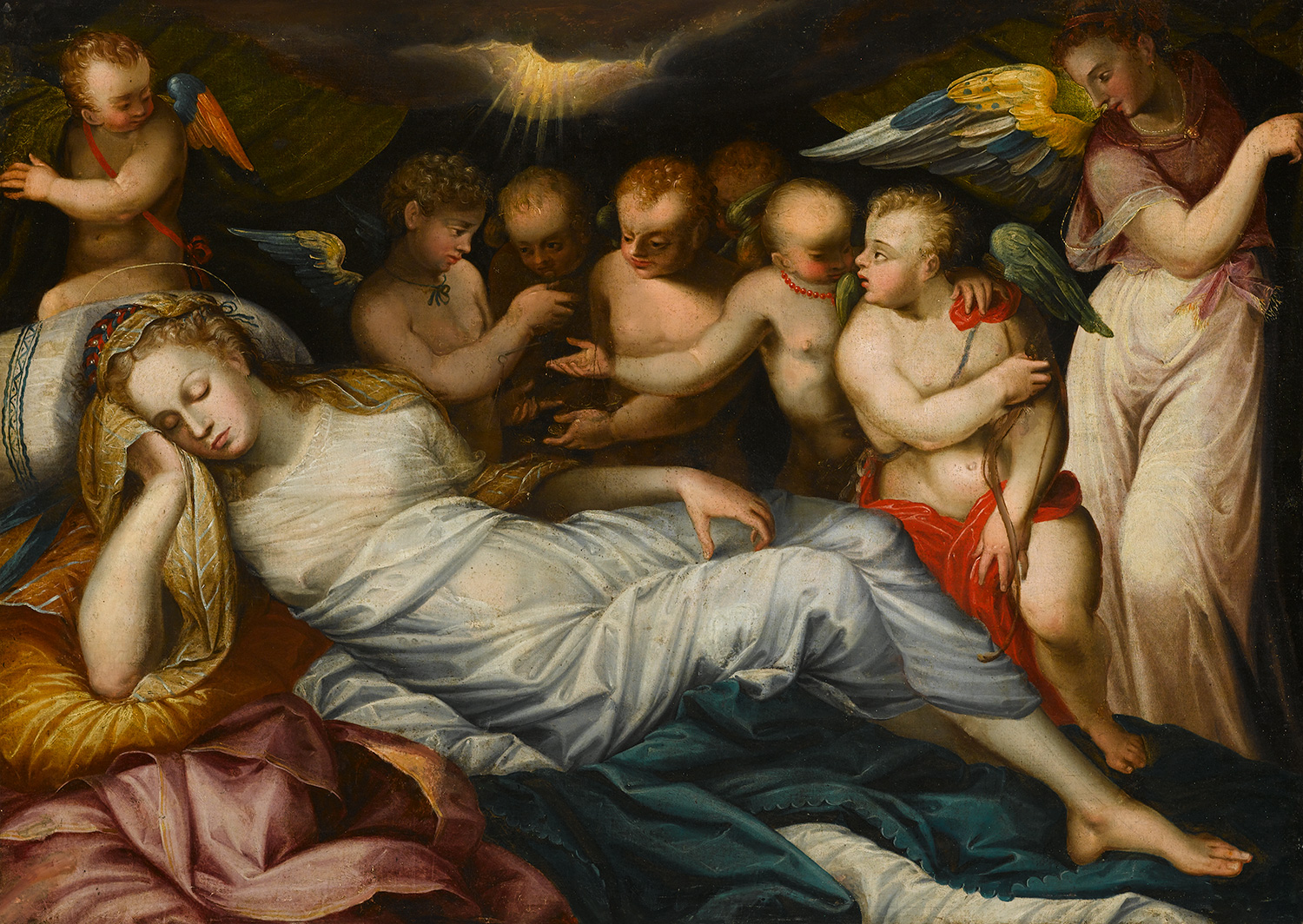Adonis and Danaë
In addition to Poppaea Sabina, the Norton Simon collections contain two works painted by unidentified artists of the School of Fontainebleau. The Birth of Adonis—with its mythological subject matter and clamorous heap of overlapping forms—is a quintessential School of Fontainebleau painting (fig. 1). Floral wreaths adorn the figures’ twisted and braided coiffures. Exposed breasts (made all the more conspicuous through the harness-like straps of the figures’ costumes) mingle with a golden lyre, cornucopia of flowers and gilded ewer. The curvilinear contours of these various elements evoke the female body. Thus, women are not only represented in a literal sense, but the undulating, decorative lines found throughout the composition metaphorically double their presence.
This emphasis on the female body is likewise present in Danaë Sleeping (fig. 2), where Cupid and a flock of putti converse and gesticulate over Danaë’s recumbent form. The Norton Simon’s three School of Fontainebleau paintings therefore share a preoccupation with the female body, but they are further connected through their statuses as copies. Like Poppaea Sabina, the compositions of Birth of Adonis and Danaë Sleeping are known through multiple examples that testify to the close working conditions of artists associated with the French court.
It is clear, then, that the female form was a common preoccupation for School of Fontainebleau artists, but what was it about Poppaea Sabina specifically that captured their attention?
Figure 1: School of Fontainebleau (French, 16th century), The Birth of Adonis, mid-16th century, oil on panel, 38 x 30-3/8 in. (96.5 x 77.2 cm), The Norton Simon Foundation, F.1965.1.026.P
